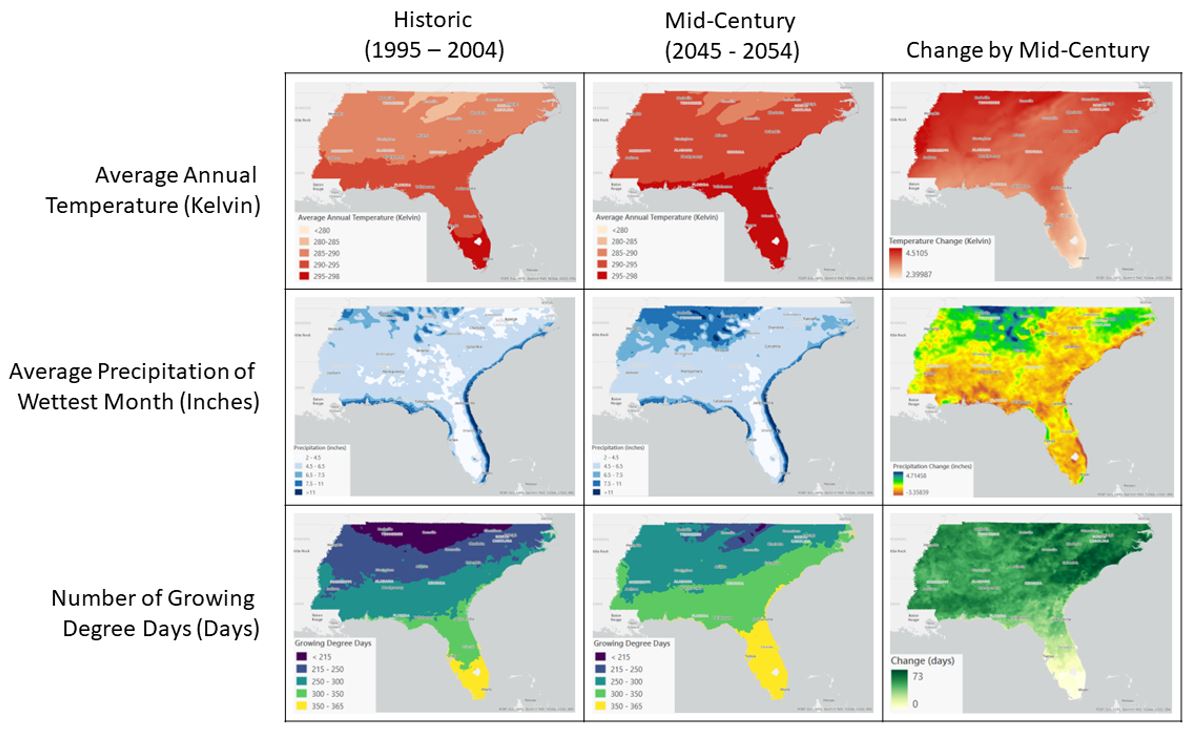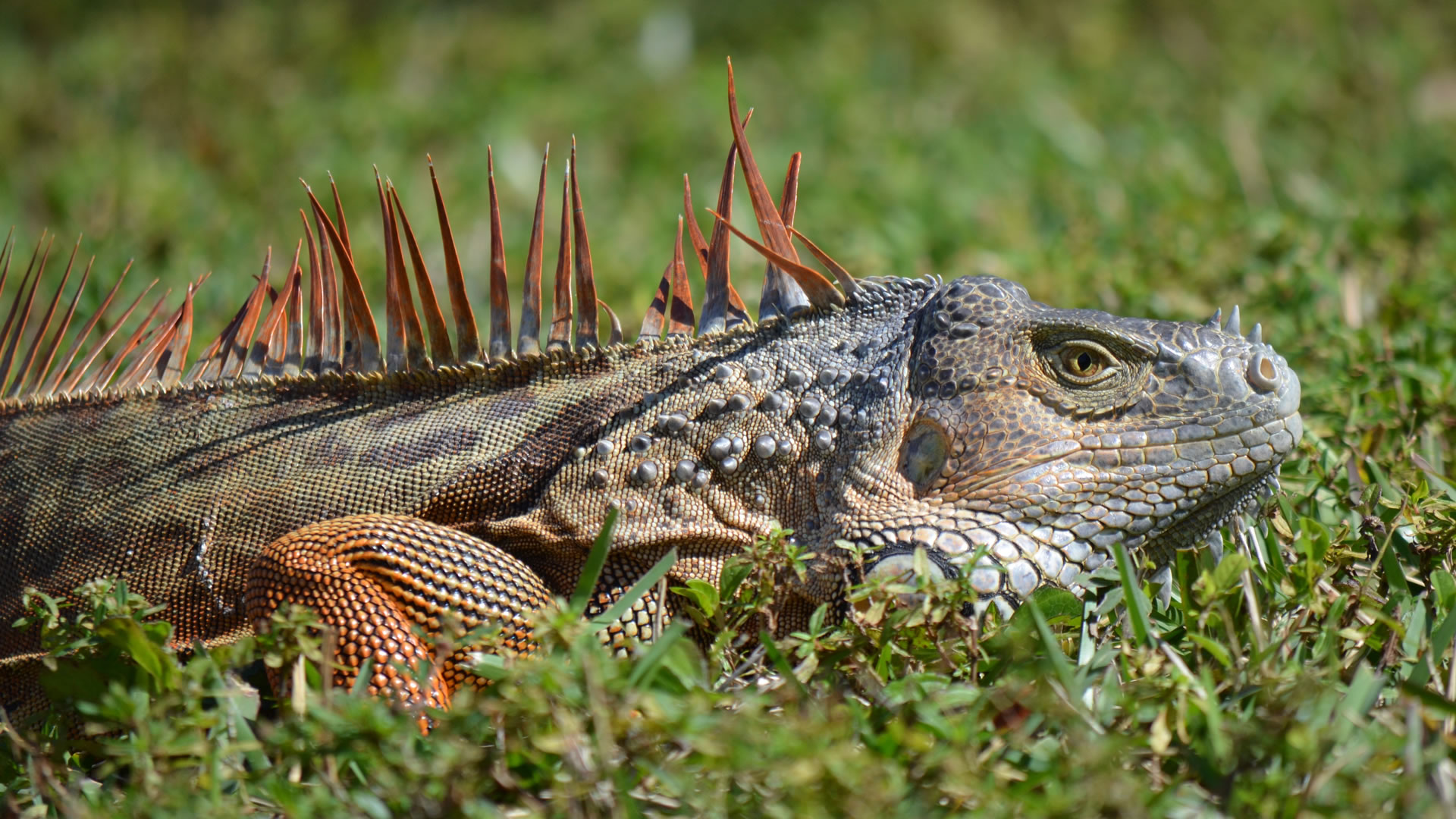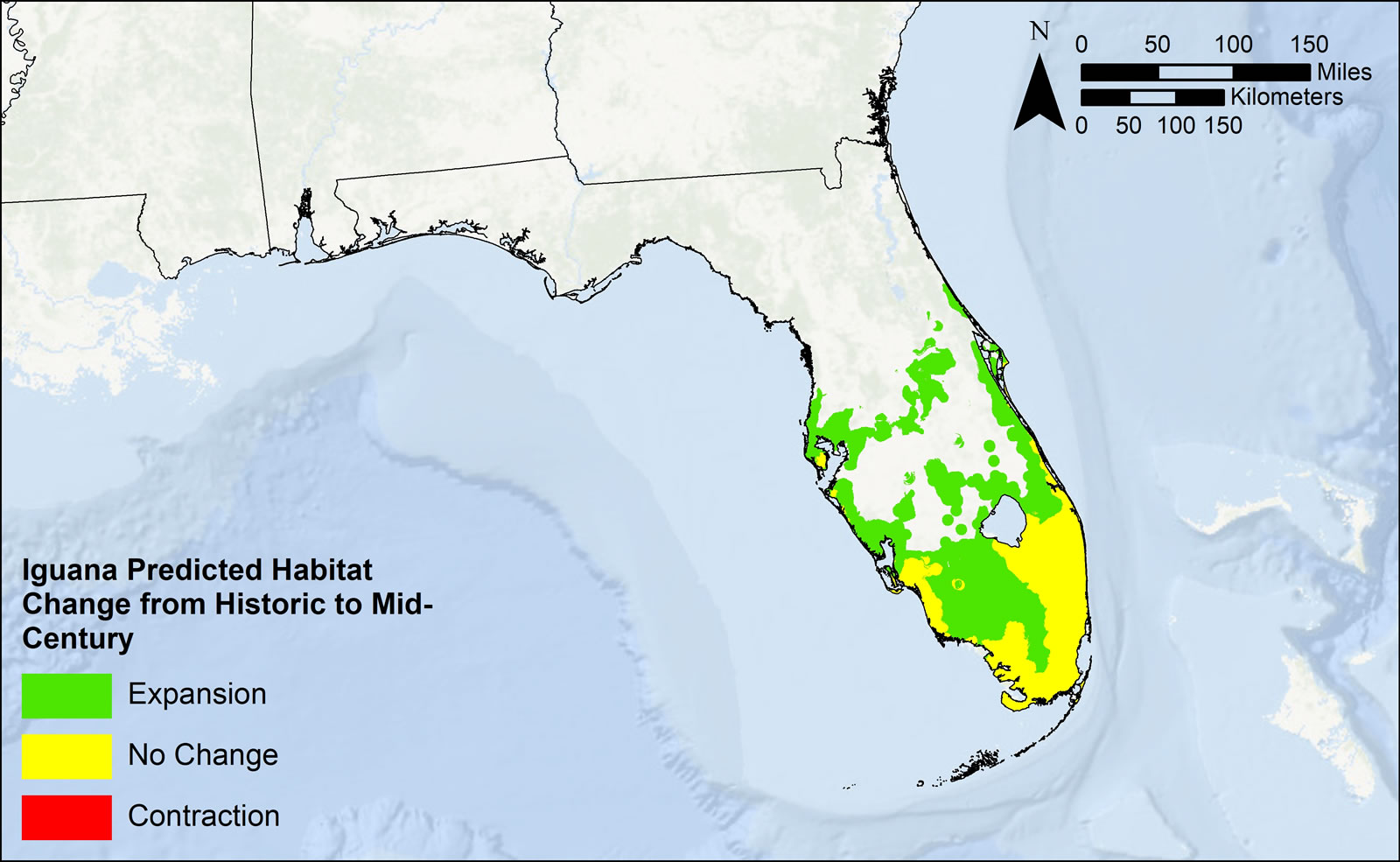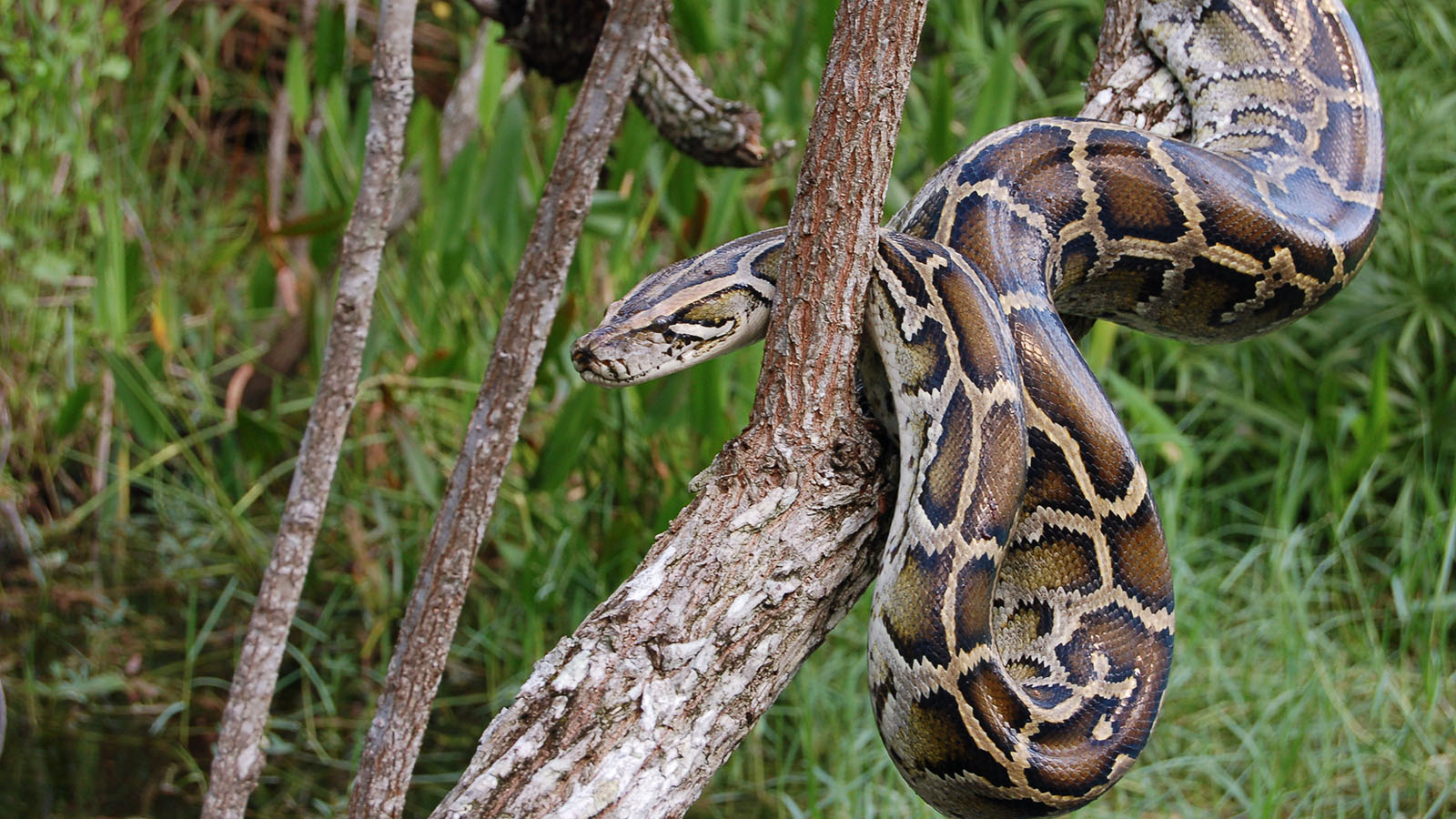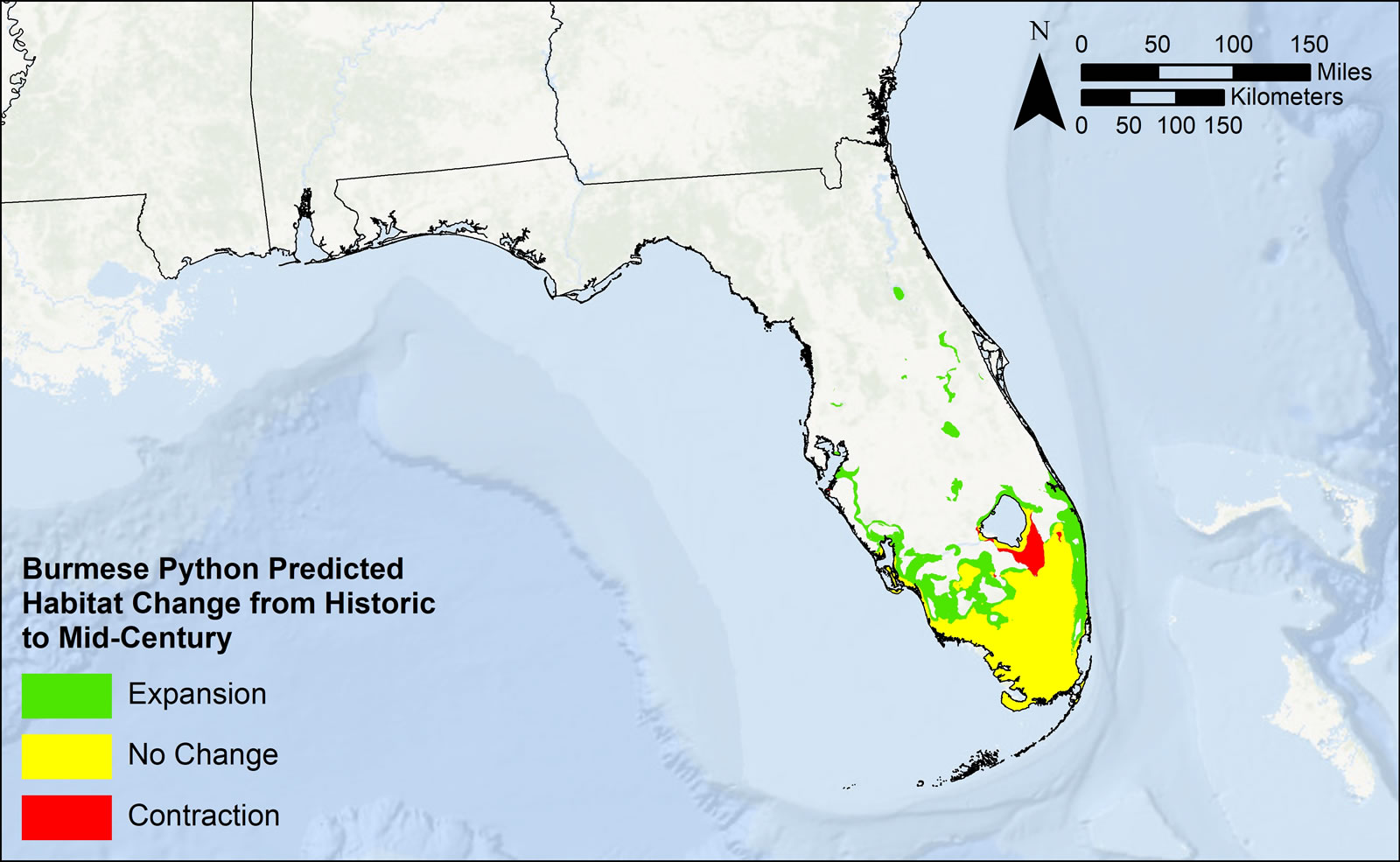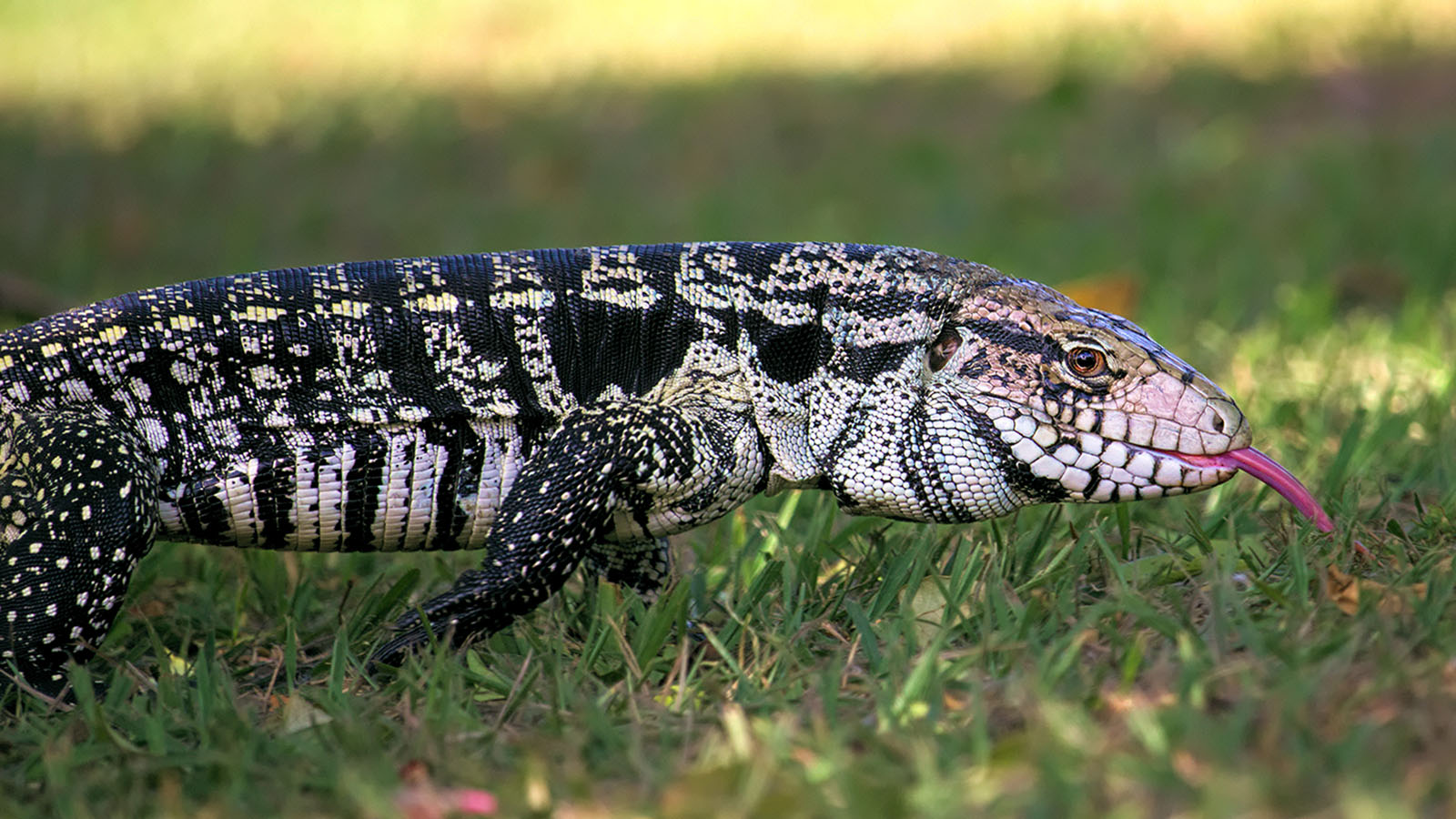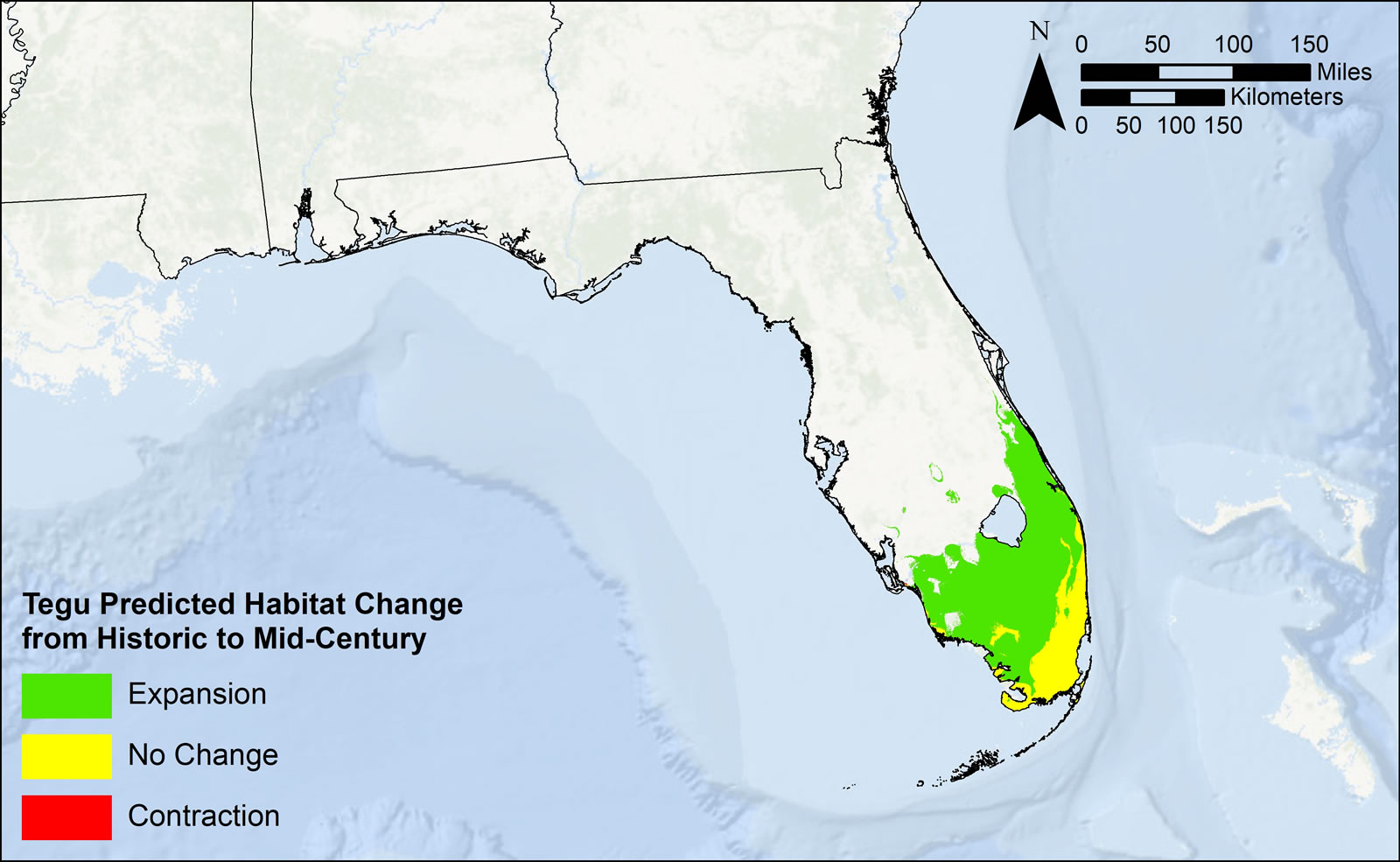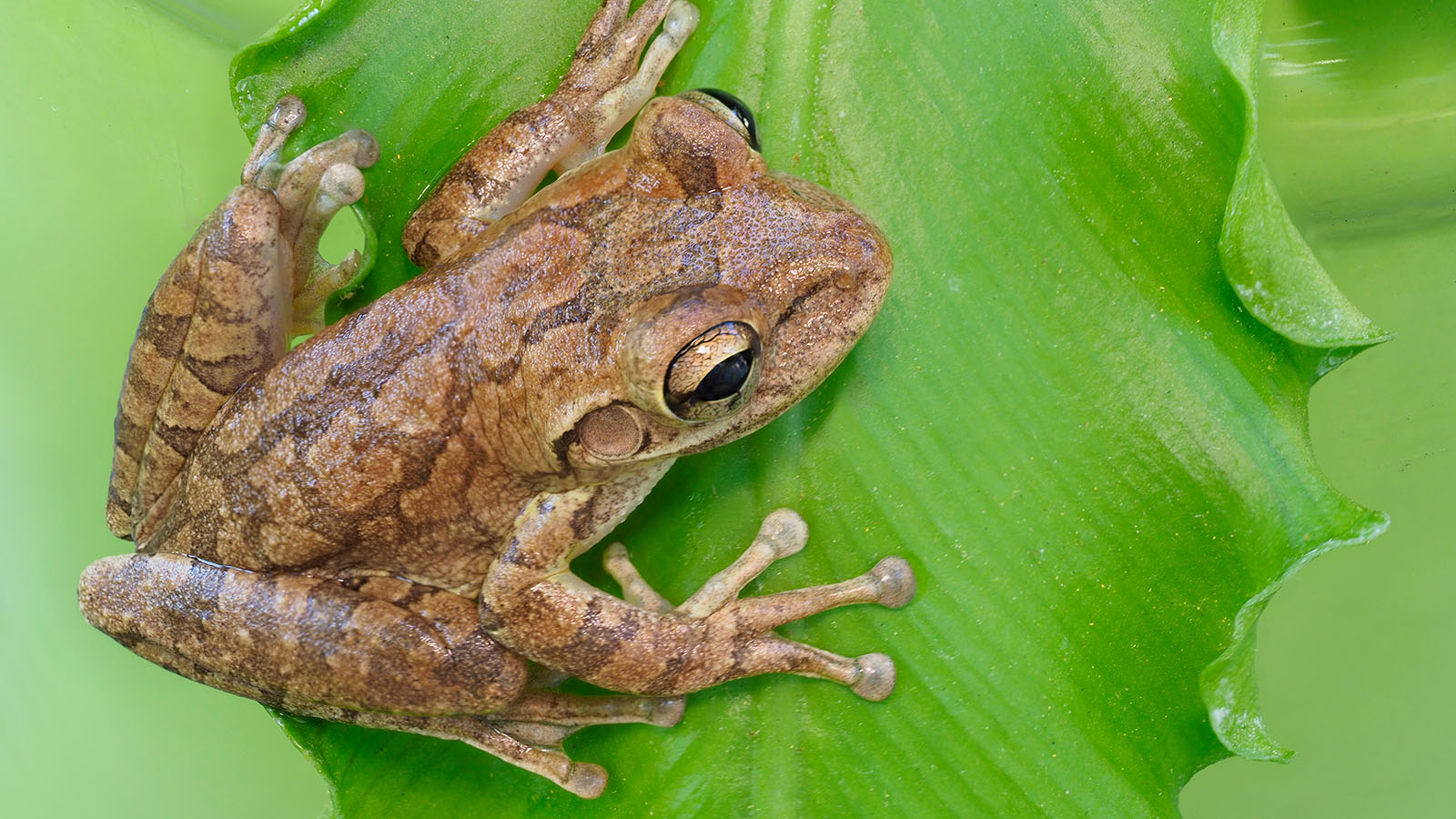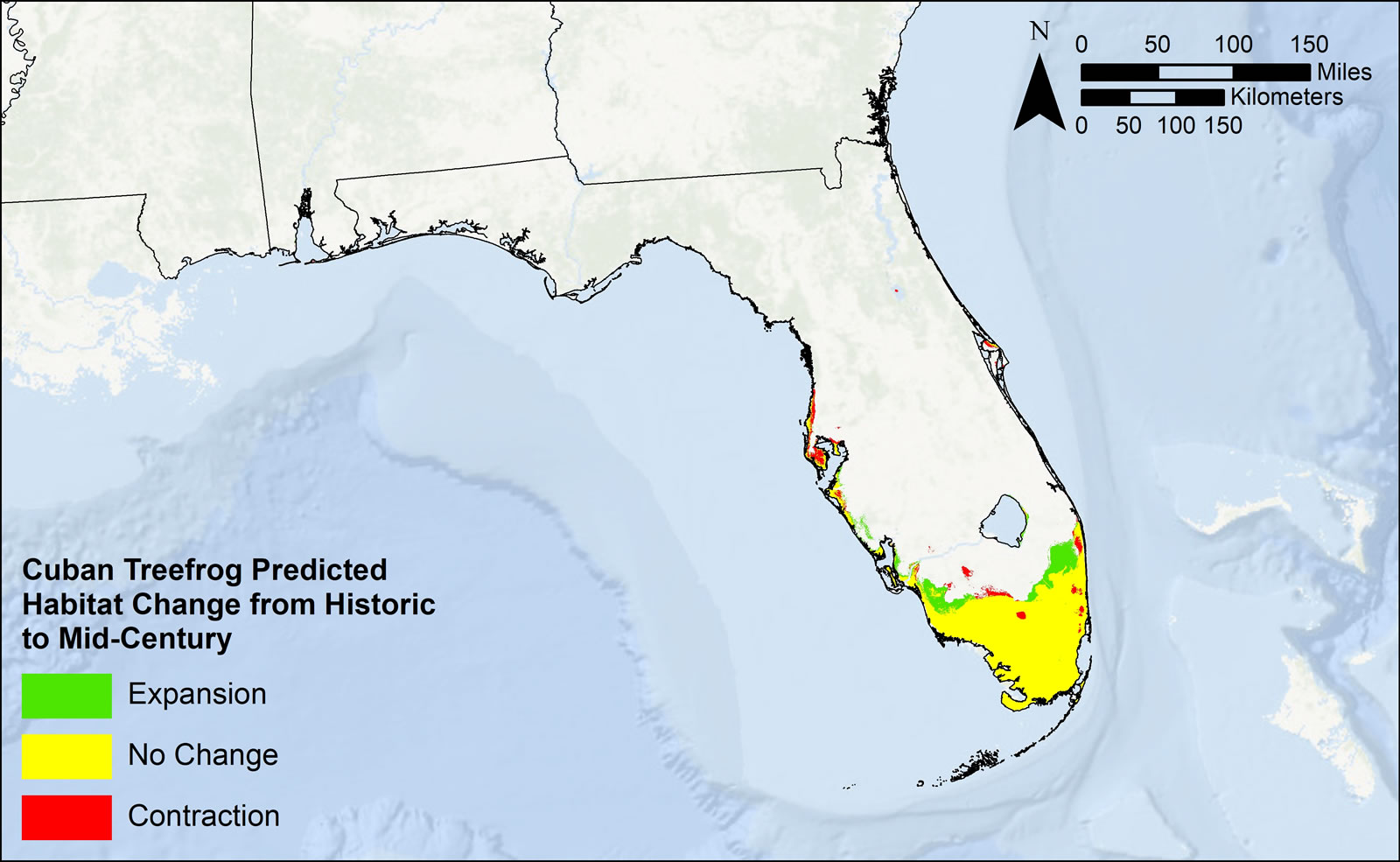EVS scientists have assisted federal agencies in developing and implementing natural resource management plans to conserve threatened and endangered species and control target non-native invasive species. In some of these efforts, EVS staff have utilized spatially explicit species distribution models (SDMs) to examine, map, and quantify the influence of climate and other environmental variables on managed species’ geographic distributions.
Understanding how climate change may affect the future distributions of rare and managed species is important for natural resource managers if they are to develop ecologically effective and climate resilient management plans. SDMs are effective modeling tools to predict future changes in species distributions related to climate change. Current SDM approaches commonly utilize statistically downscaled climate data at resolutions of 10 arc-minutes (~ 325 km2). Such coarse-scale input data produce species predictions at resolutions too coarse for land managers to make management decisions.
However, EVS’s climate scientists have developed dynamically downscaled climate models across the U.S. at resolutions as fine as 4 km (16 km2). EVS has extended these dynamically downscaled climate models to predict spatiotemporal patterns of extreme environmental events such as wildfire, drought, and coastal and hydrological flooding. Collectively, EVS develops and maintains >500Tb of downscaled climate data that may serve as more suitable environmental predictor variables for SDMs to inform future ecological management decisions. Example maps of EVS climate data are shown in the figure below. These datasets consist of 10-year simulations integrated over the Southeastern United States for historical (1995-2004) and mid-century (2045-2054) under the business as usual emission scenario (RCP 8.5). These climate datasets are very useful in numerous ecological applications, particularly in developing an ecological risk framework over small spatial scale and assessing how climate change could alter a species’ future geographic ranges.
Combining EVS’s expertise in climate and ecological sciences, several SDMs were developed for four invasive species in the southeastern United States. These species were modeled to develop and demonstrate a framework that leverages EVS’s high resolution climate data to inform ecological management. The SDMs were developed using a total of 19 environmental predictors consisting of EVS’s dynamic climate data and other environmental datasets such as slope, soils, and land cover. Several SDMs were developed for each species at historical and mid-century time periods and an ensemble average was used for each time period.
Results of the SDMs are summarized and illustrated in the table and figure below. Changes in invasive species distributions can both be mapped and quantified at regional scales, demonstrating how this novel statistical framework can be used to inform conservation planning. All modeled invasive species were predicted to expand their distributions in the future in relation to climate change. Collectively, these results show the probable spread of invasive species in the Southeastern U.S. and can be used to develop proactive management plans targeted towards these species, as well as underscoring the need to take action to reduce or mitigate climate change.
| Burmese Python | Green Iguana | Argentine Black & White Tegu | Cuban Treefrog | |
|---|---|---|---|---|
| Historic Suitable Habitat (mi2) | 6,211 | 6,410 | 2,385 | 5,948 |
| Mid-Century Suitable Habitat (mi2) | 9,305 | 17,061 | 10,925 | 6,427 |
| Net Total Change (mi2) | 2,952 | 10,497 | 8,540 | 479 |
| Percent Change (%) | 48% | 164% | 358% | 8.1% |
Results of the Species Distribution Models (SDMs)
The State of Florida is home to many nonnative species of reptiles and amphibians. Model results below show the change in predicted extent of suitable habitat for four exotic species.
Green Iguana
The green iguana is native to South America and is popular in the North American pet trade. Individuals that escaped captivity have become established in many parts of southern Florida. Having no natural predators, populations in Florida have expanded since they were first detected in the 1960s.
Burmese Python
The Burmese python is native to Southeast Asia and was once popular in the North American pet trade. During Hurricane Andrew in 1992, a Burmese python breeding facility in south Florida was destroyed, allowing many pythons to directly escape into the Everglades. It has relatively no predators in the Florida Everglades and is outcompeting other native snake species and impacting the native mammal, reptile, and bird populations of the Everglades.
Argentine Black and White Tegu
The Tegu is a large, thick, black and white lizard originally from South America. It was introduced to portions of Florida through the pet trade in the early 2000s.
Cuban Treefrog
The Cuban treefrog is native to Cuba, Cayman Islands, and Bahamas. It was presumably accidentally brought to Florida in the 1920s aboard cargo ships. Populations are now established throughout much of Florida.
